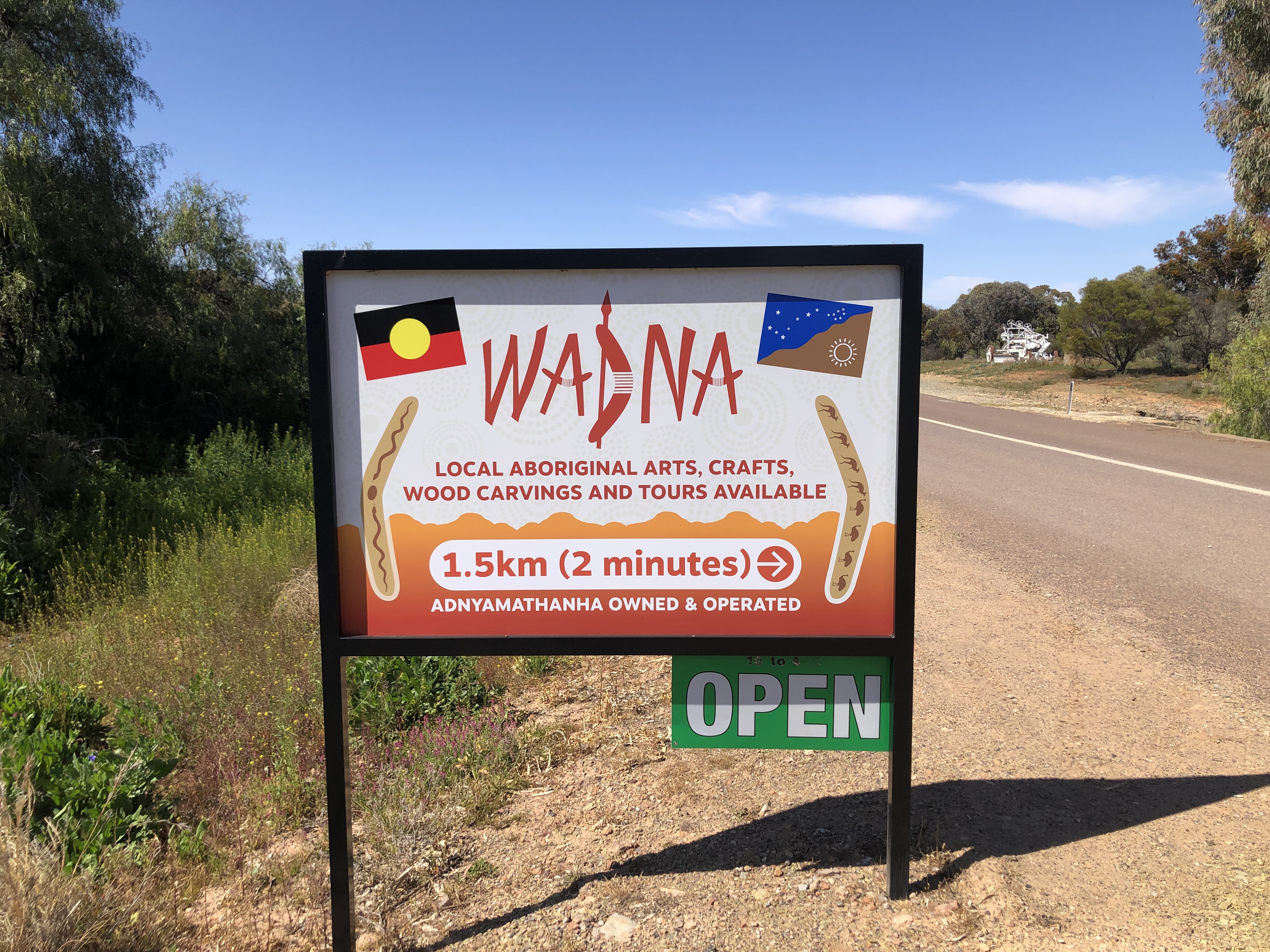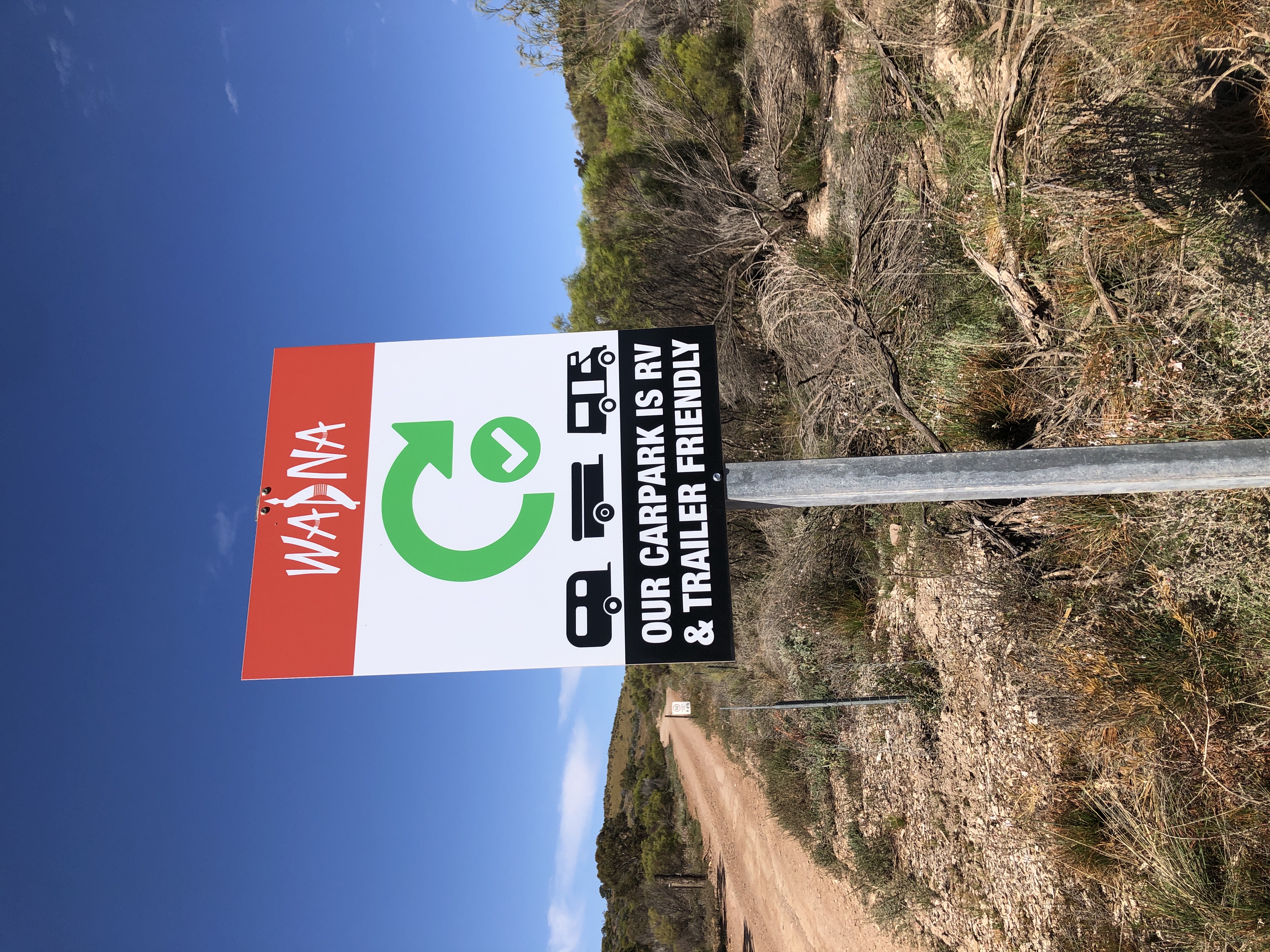The $3,000 coffee
Most of my trip to the Ikara-Flinders Ranges, South Australia, last year went as planned.
Plenty of wildlife, time in the red dirt, and lots of friendly fellow road trippers.
But the $3,000 coffee caught me by surprise.
I’d stopped in the small town of Blinman, boasting a population of thirty five, for a coffee and to sample some of the bakery’s finest.
Strolling the main street, I spotted this sign.
Being a huge fan of Indigenous art, I jumped back in the van and drove a short distance down a dirt road to the gallery.
That’s when I saw this second sign.
These two signs, it turned out, were very dangerous.
Dangerous to my bank balance.
What started as a quick stop for a coffee became a $3,000 injection into the local Blinman community, thanks to my purchase of a magnificent painting by Megan Lyons.
This is the power of signage.
The impact we have on our prospective customers through how we communicate.
The words and images we choose can make or break our business.
Let’s say, conservatively, this gallery makes one $3,000 sale a month and the signs are there for 5 years. Those signs have generated $180,000!
But what was it about these signs, particularly, that made them so effective?
Behaviourally effective signage
The genius of these two signs is how they overcome barriers to action.
The first indicated the gallery was only 1.5 kilometres, or 2 minutes, down the road.
When you're in outback South Australia, that distance is nothing.
This was an important piece of information to communicate because otherwise people might not want to divert down a windy, unsealed road.
The sign reduced doubt and minimised perceived effort.
The second sign also played an important role.
This time it was about reducing fear people have that their RV or trailer would be awkward to park. The turning circle icon made it clear that movement wouldn't be a problem.
Making your messages behaviourally effective
So, how do you make your messages effective?
The best place to start is to consider the three barriers to action – the three reasons people don't do what you want them to do:
- Laziness - it seems more effort than it's worth.
- Confusion - you are overwhelming them with information or decisions; and
- Fear - they are worried about proceeding.
You can read more about these three barriers here.
That's what I spend my day doing, by the way. Helping businesses address these three barriers in a way that achieve results. That could be influencing customer behaviour, or that of colleagues. Get in touch if you want to know more.
What examples do you have or effective (or ineffective) signage? I'd love for you to send them to me.
You might also find interesting:



